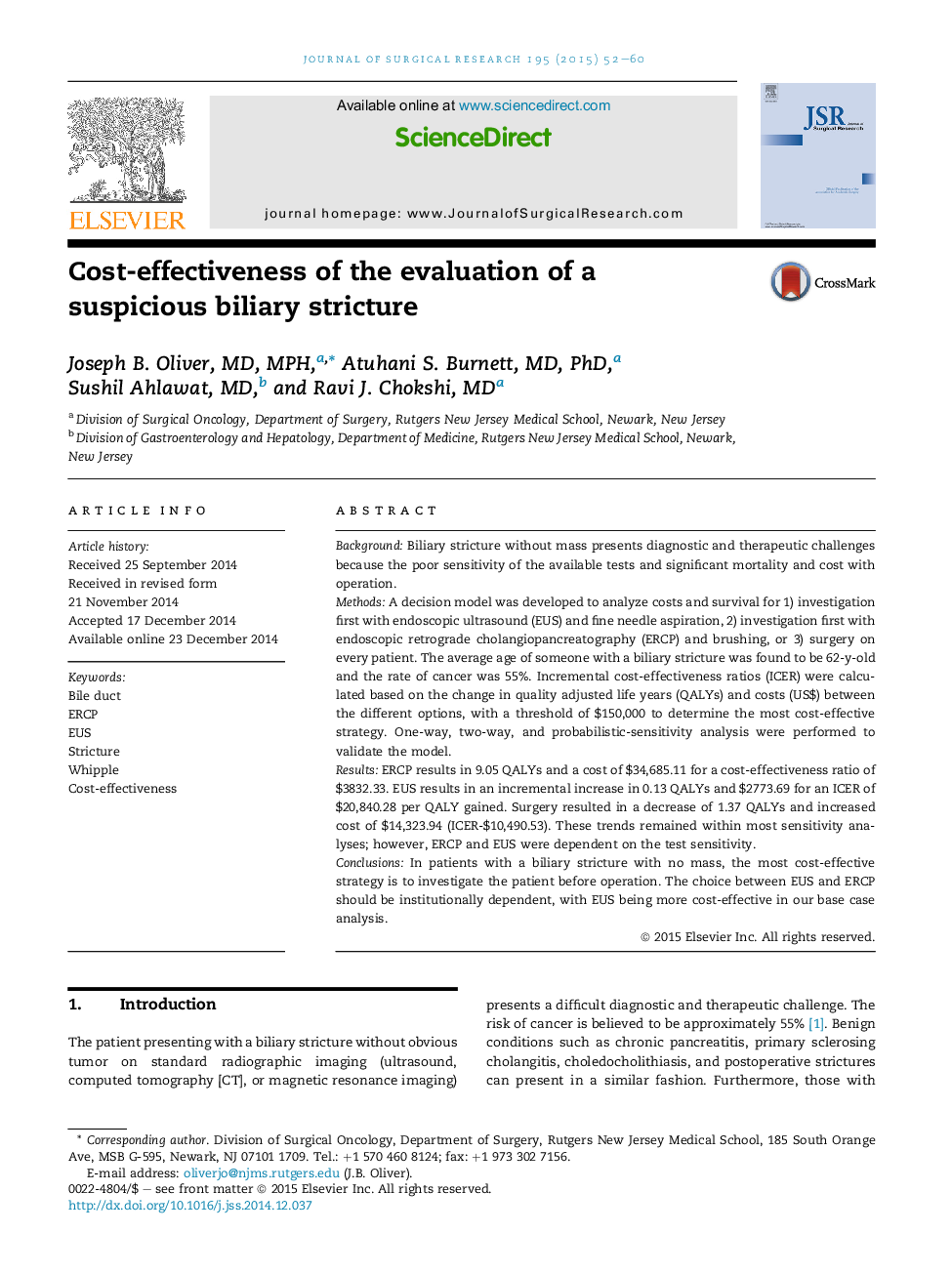| Article ID | Journal | Published Year | Pages | File Type |
|---|---|---|---|---|
| 4299871 | Journal of Surgical Research | 2015 | 9 Pages |
BackgroundBiliary stricture without mass presents diagnostic and therapeutic challenges because the poor sensitivity of the available tests and significant mortality and cost with operation.MethodsA decision model was developed to analyze costs and survival for 1) investigation first with endoscopic ultrasound (EUS) and fine needle aspiration, 2) investigation first with endoscopic retrograde cholangiopancreatography (ERCP) and brushing, or 3) surgery on every patient. The average age of someone with a biliary stricture was found to be 62-y-old and the rate of cancer was 55%. Incremental cost-effectiveness ratios (ICER) were calculated based on the change in quality adjusted life years (QALYs) and costs (US$) between the different options, with a threshold of $150,000 to determine the most cost-effective strategy. One-way, two-way, and probabilistic-sensitivity analysis were performed to validate the model.ResultsERCP results in 9.05 QALYs and a cost of $34,685.11 for a cost-effectiveness ratio of $3832.33. EUS results in an incremental increase in 0.13 QALYs and $2773.69 for an ICER of $20,840.28 per QALY gained. Surgery resulted in a decrease of 1.37 QALYs and increased cost of $14,323.94 (ICER-$10,490.53). These trends remained within most sensitivity analyses; however, ERCP and EUS were dependent on the test sensitivity.ConclusionsIn patients with a biliary stricture with no mass, the most cost-effective strategy is to investigate the patient before operation. The choice between EUS and ERCP should be institutionally dependent, with EUS being more cost-effective in our base case analysis.
